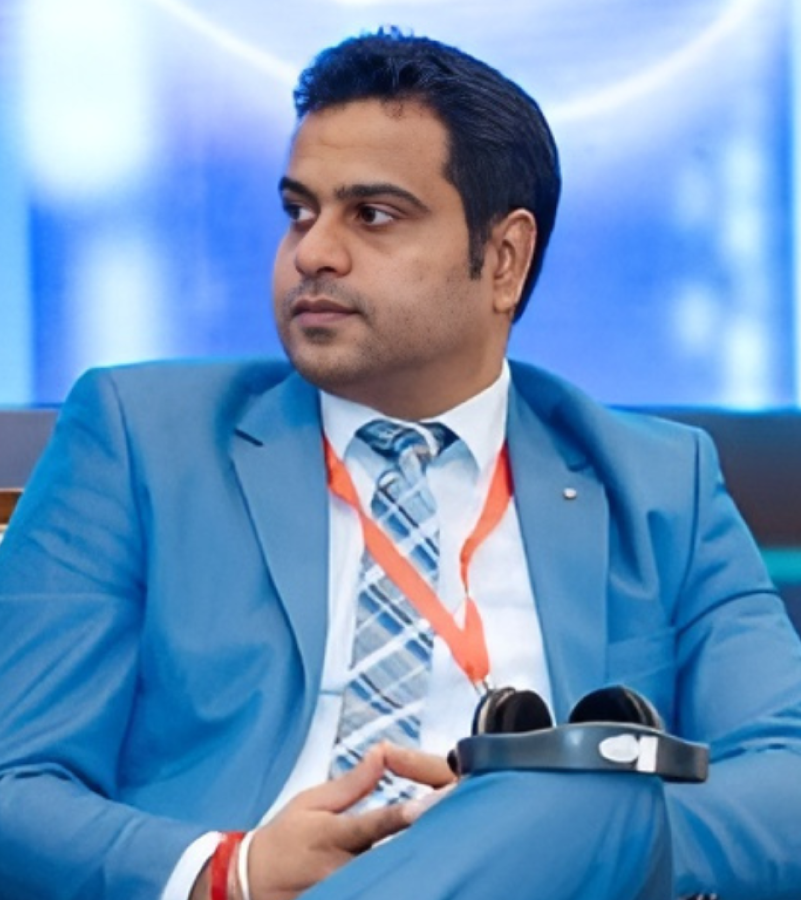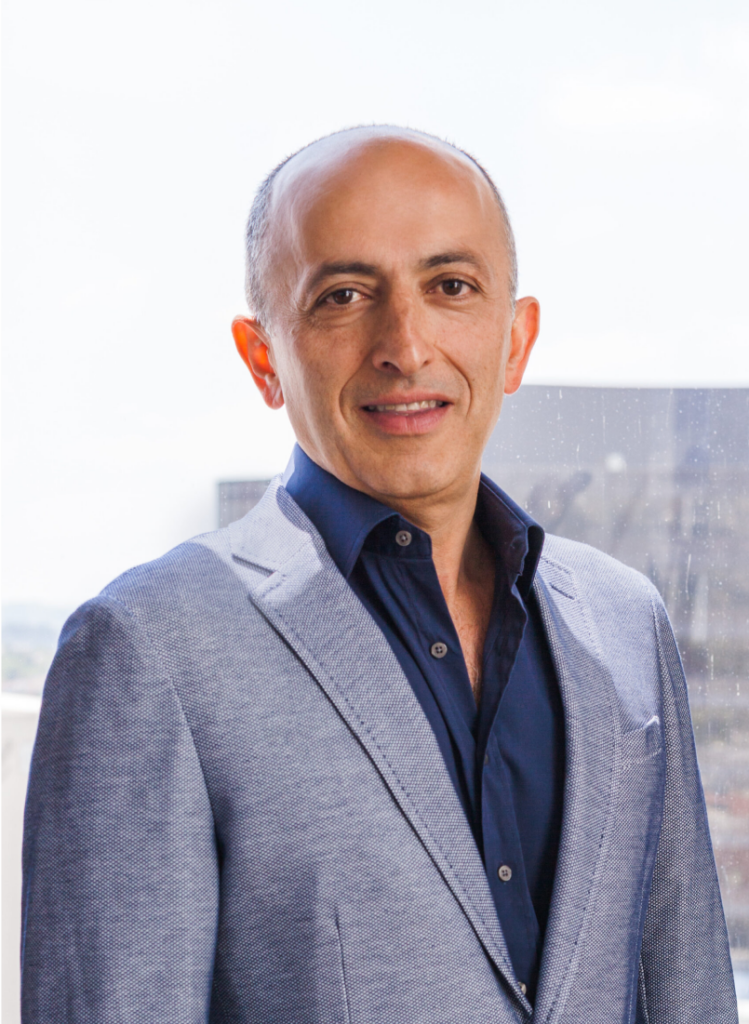"Our focus is expanding our footprint in the United States, serving more tenants, and introducing the concept of midterm rentals to more landlords.”
We understand that you are a deep tech, big data company. Could you give us a brief overview of Vatic AI today?
We want to become the audience intelligence platform of choice. So, we’re focusing more on banks, fintech, credit bureaus, and telcos at this time. What we basically have is that today, there’s a lot of innovation happening at the bottom of the funnel in terms of credit, risk, underwriting, etc.
What we wanted to bring is a top-of-the-funnel innovation where we reduce the cost of acquisitions for new customers by completely reducing the ad waste by increasing the segment-level targeting. How we achieve that is, basically, we do a web stack ranking of all the keyword searches that happen on the web. It could be multiple events. It could be trillions of events.
So, we index those pages and understand the keywords. We have close to 20-plus patents, all issued patents in the US right now, which are being used to make up an algorithm in a much better shape and form. That’s the one that basically leads to a lower cost of acquisitions for customers.
Understood. One of the things I have noticed is that you have several products. The first one will be your Qscore, which allows you to qualify your funnel before acquisition to reduce the cost. Could you tell us a little bit more about it as well?
Yeah. So, Qscore is the qualifying score product, which basically prequalifies the customers even before they start reaching out in terms of applying for a particular loan or a credit card or whatnot. So that’s what it does.
How do we do that? So we have information about the anonymous online audience today to a larger extent. We use those keywords and stack rank them, and then eventually learn over a period of time to understand the financial sophistication of a customer, essentially tagging across three different elements: urgency, frequency, and recency.
So those are the three big elements that we actually tag to every single person or rather cohorts of people so we understand those cohorts much better. We will target them to reduce the cost of acquisitions drastically. So what typically happens is when somebody comes in, when you actually reach out to maybe multiple people, how do you actually assess a credit quote? So basically, you have two things: you have the intent to pay, and you have the ability to pay.
The ability to pay is towards the bottom of the funnel. Most of the time, it’s your transaction data and income data that help you do the ability to do pay your intent to pay is always figured out way up the funnel in terms of behavioral tracking and whatnot. Where do you spend time on a website? Do you have impulse purchases? Do you spend time on gambling sites? You spend time elsewhere, or do you spend time on very financially sophisticated sites. So all those things will matter to understand the intent of the customer to pay back.
What we do is augment the customer’s intent to pay to a greater extent way up the funnel. So, instead of spending money on thousands of customers at the same time, in terms of showing the ad, you will focus more on the set of customers who are pre-qualified. So your ad waste is reduced big time.
And because you reduce the address or sort of have a financial score way up the funnel, you can also probabilistically identify the person. Then, towards the bottom of the funnel, the conversion rate improves. And once the conversion rate improves, that’s the cost of acquisitions, which goes down drastically for the bank, or a fintech, or a telco, or you name it, right? So that’s where it stands.
You have three additional products, After Sales and Kompete, which allow you to check competitors’ traffic as well as InMarket or e-commerce. Will you discuss those a bit?
Those are products which we already have. So I’ll tell you a little about the journey of this company and my association with it. So this company was Reverse Ads, maybe four or five years back. That’s how it started, and the founder and I, we know each other for a long time. I used to advise him when he was Reverse Ads. So what Reverse used to do is it pitted itself against Google.
Today, when you search for Google, it’s keyword, right? But his algorithm was basically the reverse search. The reverse search is basically intent-based search, so you intent-base your search. And that’s how the entire thing started. So the Kompete and After Search, and all those products were derivatives of that point in time for a fully managed services product.
From that onwards, when the algorithm started evolving just a year and a half back is when we came up with this Qscore as an idea, concept and product right now. So, that’s where the pivot happened. Pivot happened because we saw real need in the financial services market. And I’ve spent a lot of time on financial services and especially in credit, where I’ve seen that the cost of acquisition is through the roof, especially when digital banks are facing a big profitability issue today.
If you look at all the digital banks, new banks, and all different parts of the world, there’s a real problem because the cost of acquisition is very high, and they’re not able to get to profitability, even though they’re digital only. So that’s the biggest difference, right?
And think of a traditional consumer. How much are they spending? They’re spending quite a lot of money both onsite as well as online, which is where my product Qscore will make relevant sense. All these, After Sales, Kompete, etc, will also actually help on top of what the Qscore can do in terms of doing a fully managed service solution.
By the way, the whole narrative is that it effectively gives them a better competitive advantage when it comes to the cost of acquisitions and also helps improve conversions to a greater extent. So, those are the things that we find very comfortable and a good solution for the customers to use.
What would be your key message for potential customers?
My potential message is today, you’re spending a good amount of percentage on the cost of acquisitions to cover customers who are coming to you digitally as well as offline. Today, there’s a lot of conversion that we do from offline to online, because people are spending a lot of time online today. That is much better data that you can actually go after. You can also triangulate those data to a larger extent, probabilistically matching that identity back to the customers or the cohort of customers.
If you can get to know your audience much better, if you know your audience in a much more intelligent way every day, or even every week, you can understand the potential base size of the customer base that you can go after. That gives you better economics in terms of the business that you manage or better economics in terms of the targets that you can set for yourself and for the trend for the team on the portfolio level.
Also, you can increase the portfolio health in a very better manner. How does that happen? Think of this today. If you want to go after the credit cards or the loans as a product in the market, you do a little bit of a market research study and say, “Okay, this particular market, it looks like I can actually go after like a million customers.”
So, with this product, you can drill down to the segments of customers that you want and who are the recent ones who are urgently looking for such a product and might qualify for that product. It gives you the recency factor, the urgency factor, and the relevancy factor.
All those factors also come back into it. It gives you a better view of how many such customers are available right now that you can go after. What is the potential scoring that can happen for these cohorts? And how will the conversion happen? That gives a better view of the business. It gives you a better hold of where it can go forward. And also in terms of having a better portfolio, it can help you pull your portfolio in such a segment. So you can focus more on the segments.
For example, you can focus more on mass affluent travel customers and go a little deeper into it. You pull their portfolio at that level, not necessarily relying on any other segments, which just come in and are happy with the lead and happy as long as it converts. You don’t need to go there and then you struggle with the portfolio health at a later point.
That’s the key message that banks, fintech, telcos, and credit bureaus need to get. Once they take that message, it becomes important for them to use it and then create an entire portfolio strategy, entire acquisition strategy, and engagement and retention strategy around it. Our product will complement all these strategies.
This may be magic words for investment banks.
Exactly. The idea is you name any segment. Say, I want a luxury segment of guys who traveled twice or four times this year or whatnot. Then, you basically become ultra-focused. You come to this dashboard. It’s like this magical dashboard that is available. You come there, you put your keywords of what you need to go after, and then immediately something runs in the background because we are able to triangulate those data because we’ve actually tagged those keywords and intent stack rank and those intent bases or what the customers are actually trying to do.
Then we come up with some amount of information that you can use for your campaigns. And you then you target that effectively. It cuts across the entire funnel of luxury travel guys or any specific segments that you want to go after.
Then you basically bridge the gap of credit, saying that, yeah, if somebody is rejected, it doesn’t mean they are rejected for something. So this additional information, which queues where you need to show them because maybe you’re not showing the right product or maybe you’re not showing the right dynamic credit limit for them, etc.
What I’m envisioning is today, people’s earning patterns have changed. I mean, people are not getting paid every month. People are getting paid every hour, every day, every minute. The payment patterns have gone differently. People’s aspiration levels are also very different globally. So they want to buy something extra. They want to afford something extra right with their credit limit. If you cannot have static credits, call at the bottom of the funnel where it is going to go. It’ll be dynamic.
The world is going to become very dynamic, and the dynamism of that intent to repay (requires) making sure that this person is able and also has that intent to repay. It gets augmented by this entire behavior because he’s left a lot of digital footprint right now, which can then be used to stack rank the keywords and whatnot. And then you tag a scoring for that.
So it’s a good guardrail for all of us to evolve and say, these are set of customers that I want to show. Maybe I can show a different product or different offer specifically for Google and different interest rates for a different set of customers so that the entire portfolio also becomes much healthier, and the customer also gets what they want despite not just relying on the top-bottom of the funnel credit scoring, but more on the top of the funnel credit scoring where they at least get qualified to see the ad upfront.
And as my last question, I would like to ask you what’s the vision that you have for the company for the next one to three years?
Currently, what I’m immediately focusing on are the banks, fintechs and telcos. That’s the bigger thing that I’m focusing on to build that financial scoring narrative. And it’s at the top of the funnel. Eventually, this audience intelligence platform will be sector-agnostic. It’s all geography agnostics. So it could become a social status scoring. It could be something else right in terms of understanding.
In the immediate one to three years, what I’m looking at is to make this into an audience intelligence platform of choice not just for any sector specifically, but it becomes sector agnostic and also geography agnostic and become like a global audience intelligence platform of choice for all sectors.
Now is the right time because there are a lot of things happening with operative AI and generative AI and whatnot. So we get the right talent. So that’s another reason why we’re talking to you. We get the right talent who wants to come on board and also pull the narrative and make the accordions even much better, have more data feeding into it, get the feedback loop, etc.. And then the algorithm becomes much sharper, and then that is the way to go for all the audiences across different sectors, Victor.
Understood. I think we have covered everything. But is there anything I haven’t asked you about that you would like to mention?
My bigger ambition is to sort of create this zero credit gap globally, Victor. So what it means is it has always been my vision of essentially making sure that everyone in the world effectively has access to credit in some shape or form.
It’s a credit, meaning some amount that they can actually use and do not get discriminated against just because their income is lower or just because they don’t have a way to earn more income. So those sorts of things have always been my vision. So maybe you can start with that zero credit gap as an ambition, and this is the right tool for that to happen.
Imagine this. There could be households where only one person is earning, and the other people are dependent on that person. It does not mean that the other persons do not have the intent to repay or even the ability to repay. It’s a household-level credit. Somebody needs to get a credit. So it’s not just the individual. It’s the household in terms of contribution. There is some visibility in terms of what they bring to the table.
Today, with this digital footprint and the stack ranking that we do for keywords, intent, etc., we get even more visibility into how much they are able to afford, what is their financial sophistication and how much they are even willing to repay. Are they even able to be able to repay? So, those sorts of questions are answered much more easily. So, zero credit gap is one of the bigger visions that I have globally, and this is one small step towards that, Victor.



















